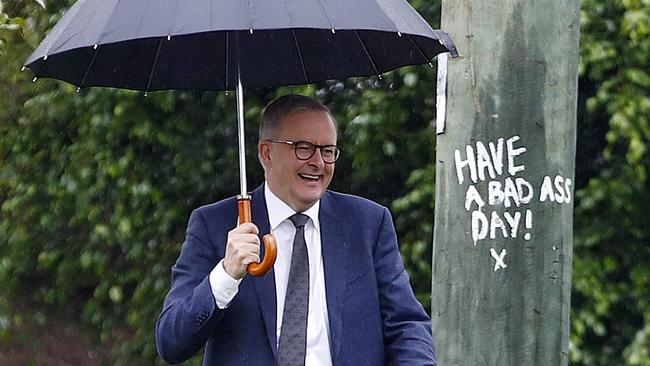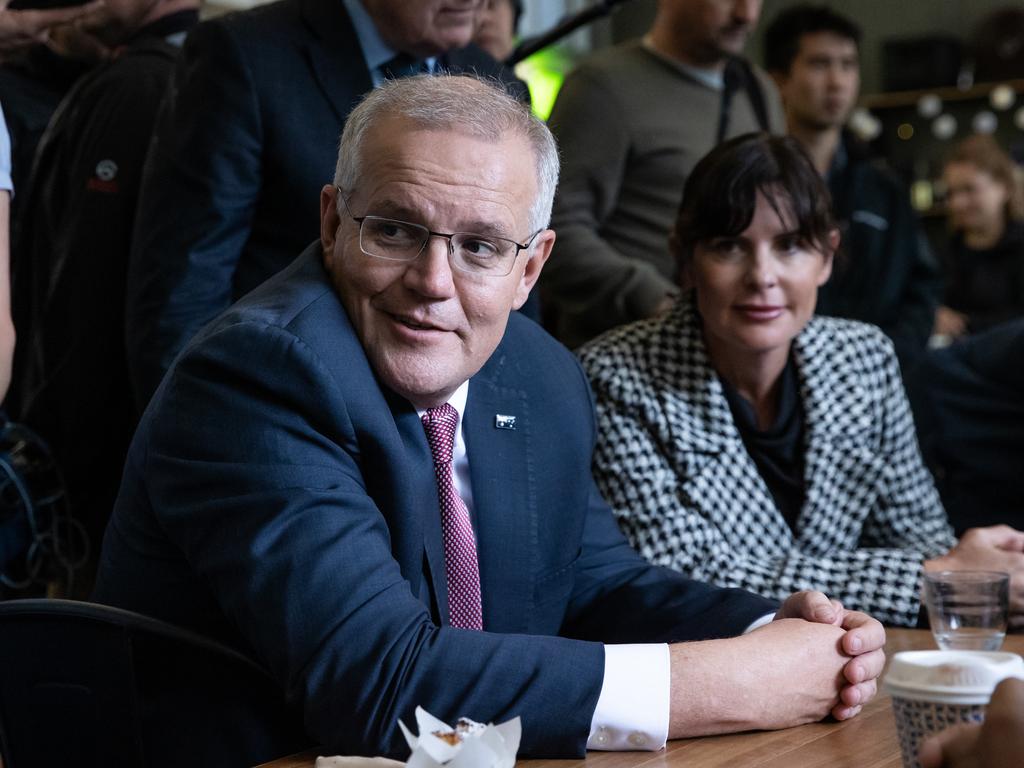Federal election 2022: Labor to win modest majority with 80 seats, YouGov poll predicts
Labor would win office in its own right and secure a majority of 80 seats if an election were held today, according to the most sophisticated poll conducted in Australia.

Labor would win government in its own right and secure a modest majority with 80 seats in parliament if an election were held today according to the most sophisticated poll conducted across Australia measuring voter intention in every electorate in the country.
According to a special YouGov MRP poll commissioned by The Australian, and based on a sample size of almost 19,000 voters, the Coalition would be reduced to 63 seats, with one Greens MP re-elected, along with seven independents.
If replicated at the May 21 election, the results suggest a hung parliament would be highly unlikely.
The predicted result, if an election were held today, would see Labor winning an estimated 12 seats, giving it a majority of five seats in the House of Representatives.
It reveals the size of the task ahead for Prime Minister Scott Morrison if he is to engineer a late swing among soft voters toward the government in the final week of the campaign.
The predicted losses for the Coalition would be broad, including four seats in Victoria, two in NSW, a further two in Western Australia and one each in Queensland, South Australia and Tasmania, but with another six seats considered too close to call.
The Coalition – which fails to win any seats from Labor, based on the results, despite remaining hopeful in some marginal electorates – would need a late swing toward it of no less than 3 per cent in key seats to retain office.
The poll shows a swag of affluent inner-city seats recording big swings against the Coalition, with swings of between 7 per cent and 9 per cent toward Labor in some suburban Sydney and Melbourne seats.
The greatest losses would be in Victoria, where the Coalition would stand to lose four seats, including the outer suburban seat of Chisholm – the third-most-marginal seat in the country – and the inner-city seat of Higgins. Both seats would fall to Labor, which is leading 53-47 on a two-party-preferred basis in the electorates.
.
In a significant blow to the Liberal party, Treasurer Josh Frydenberg would lose his seat of Kooyong to Climate 200 candidate Monique Ryan – who leads 53-47. The nearby well-heeled inner-Melbourne seat of Goldstein – where Liberal MP Tim Wilson trails 52-48 – would fall to Climate 200 Independent Zoe Daniels.
Queensland has held up for the LNP with the predicted loss of only one seat in the sunshine state – the inner-city seat of Brisbane held by Trevor Evans – with Labor leading on a two-party-preferred basis 54-46.
This would represent a swing of almost 9 per cent, with Labor winning the seat on Greens preferences
In NSW, the Coalition’s hopes of winning seats from Labor would fall short.
It would fail to win back the regional south coast seat of Gilmore, where former NSW transport minister Andrew Constance is making a run for federal parliament and faces losses in the western Sydney seat of Reid held by Fiona Martin, on the back of a 9 per cent swing against the government, and the central coast seat of Robertson held by Lucy Wicks.
Labor’s hopes of winning four seats in Western Australia have fallen well short, with the MRP showing the Coalition losing the seat of Swan held by Liberal MP Steve Irons on a swing of almost 10 per cent against the government but only narrowly losing Pearce, which is held by the outgoing former Attorney-General Christian Porter.
The Coalition would hold on to the seat of Braddon in Tasmania, where it is 52-48, but would stand to narrowly lose Bass – the Coalition’s most marginal seat, held by Liberal MP Bridget Archer – with Labor ahead 51-49.
In South Australia, Labor would win the seat of Boothby, where Liberal MP Nicolle Flint is retiring. Labor is ahead 53-47, representing a swing of 4.4 per cent against the government.
Six seats were considered too close to call. These include Bennelong in Sydney, where Liberal MP John Alexander is retiring, and the western Sydney heartland seat of Lindsay, which has changed hands at every election since 2013.
The Coalition-held seats of Ryan in outer-suburban Brisbane, Longman in Queensland and Sturt in South Australia were also considered too close to call on two-party-preferred votes of 50-50.
The only Labor held seat regarded as too close to call, and which the Coalition is hoping to pick up, was the Victorian electorate of Corangamite.
The two Northern Territory seats of Solomon and Lingiari would remain comfortably in the Labor column, as would the two ACT seats of Bean and Canberra.
The margin of error in the polling suggests that even on a worse-case scenario for Labor, it would win 76 seats. At the upper end of the margin of error, it could be as high as 85 seats.
For the Coalition, the lower margin of error would suggest 58 seats and the upper margin of error 68 seats.
The most likely outcome, according the MRP modelling, would be a Labor majority of 80 seats with the Coalition on 63, with one Greens MP and seven independents.
The seats regarded as too close to call were equally allocated to the two major parties.
The four existing independents – Helen Haines, Zali Steggall, Rebekha Sharkie, and Andrew Wilkie – would be returned. While elected on previous platforms, all now claim to have sponsorship of Simon Holmes A Court’s Climate 200 group.
Bob Katter would also retain his Queensland seat of Kennedy.
The YouGov MRP poll surveyed 18,923 voters across all 151 lower house seats between April 14 and May 7.
Electorate-level data and Census data, as well as publicly available voting behaviour intelligence, was combined with the survey results to produce a model that predicted results for each individual electorate.
An MRP model was used during the 2017 UK general election and correctly predicted the hung parliament.








To join the conversation, please log in. Don't have an account? Register
Join the conversation, you are commenting as Logout